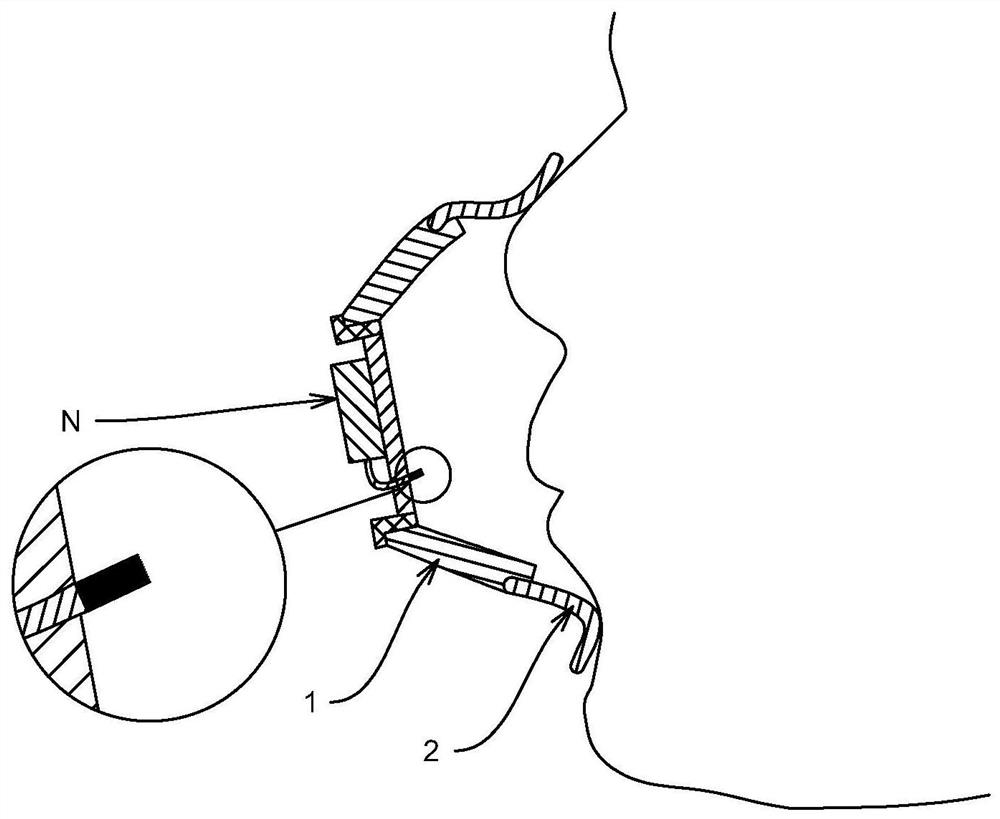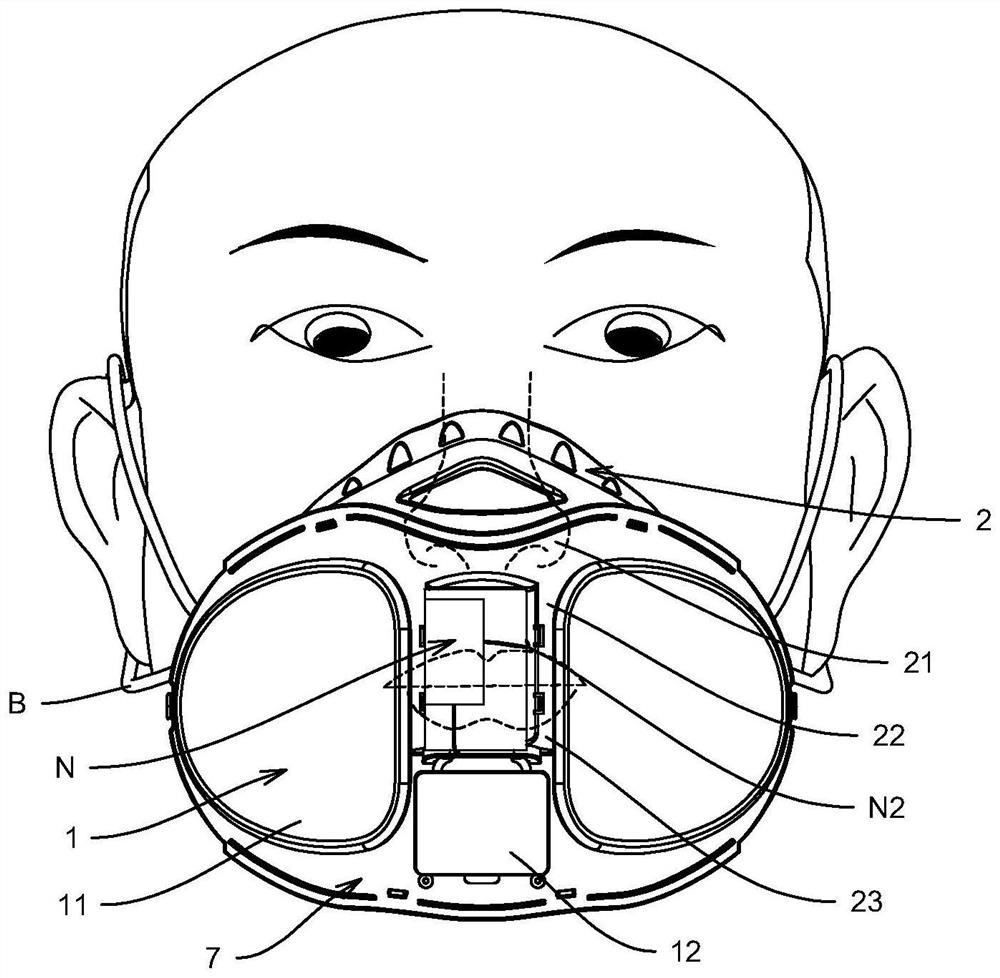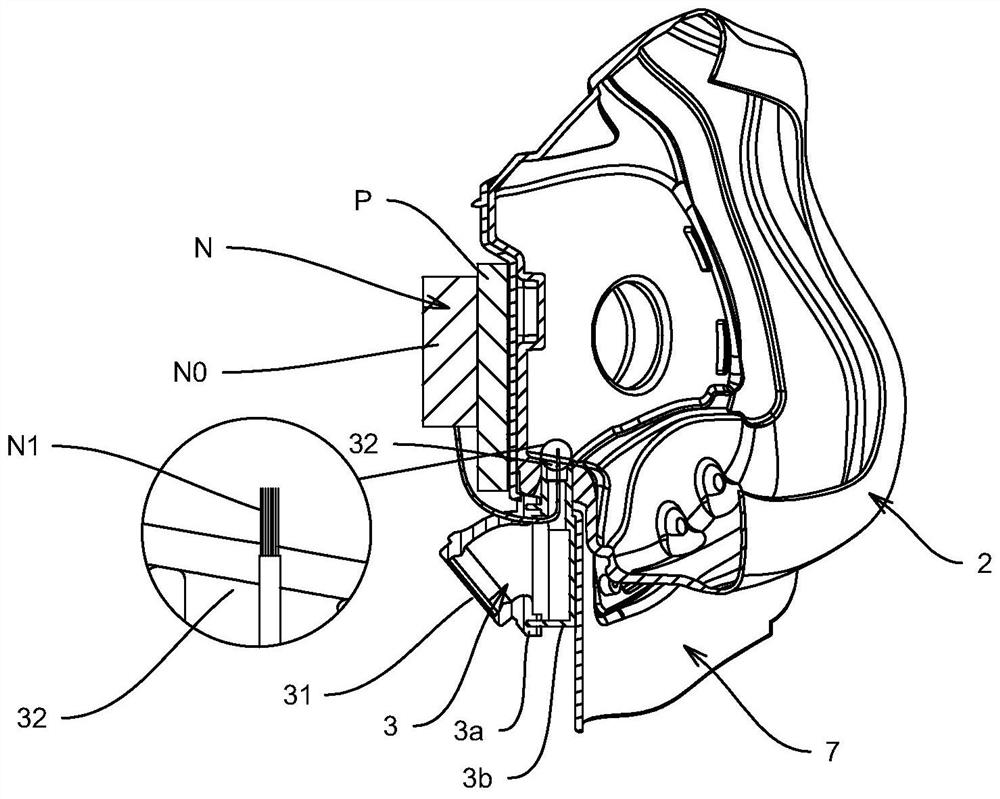Wearable channel type negative ion device
A negative ion, channel-type technology, applied in the fields of medical and health care and daily protective equipment, can solve problems such as human body damage, and achieve the effect of ensuring respiratory safety, reliable two-way respiratory protection, and avoiding health risks.
- Summary
- Abstract
- Description
- Claims
- Application Information
AI Technical Summary
Problems solved by technology
Method used
Image
Examples
Embodiment 1
[0044] Figure 1AIt shows the existing wearable negative ion device. The device is composed of filter unit 1, sealing unit 2, and negative ion unit N. However, the negative ion unit N has no independently designed negative ion channel and cannot ensure continuous and stable release of high-concentration air negative ions.
[0045] Such as Figures 1B-1J As shown, this embodiment illustrates a wearable channel-type negative ion device, including a filter unit 1, a sealing unit 2, and an anion unit N. The part where the facial skin fits is usually made of flexible materials such as silicone rubber, thermoplastic elastomer, etc., and the part of the sealing unit 2 in contact with the skin is composed of a connected nose area 21, mouth area 23 and mouth-nose transition area 22; To optimize the structure and achieve better functions, this example also includes the main casing 7, the main casing 7, the filter unit 1 and other structures can be composed of one or more components, and...
Embodiment 2
[0050] Such as Figure 2A , 2B As shown, the difference from Example 1 is that it also includes an anion generating end anti-condensation component 5 that prevents water vapor from condensing near the negative ion generating end N1. In this example, the anion generating end anti-condensation component 5 is a one-way valve 50 structure, located at Above the negative ion generating end N1, the one-way air valve 50 is opened during inhalation ( Figure 2A ), the negative ion generating terminal N1 is directly connected to the opening of the respiratory tract; when exhaling, the one-way air valve 50 is closed ( Figure 2B ), the closed one-way air valve 50 prevents the exhaled water vapor from contacting the negative ion generating terminal N1.
Embodiment 3
[0052] Such as image 3 As shown, the difference from Example 1 is that in order to prevent negative ions from contacting the filter material of the filter unit, and then neutralize the positive charges on the filter material to affect the filter effect and life, a gas channel is provided between the filter unit and the outer breathing chamber, and the gas Conductors C including mesh, needle and ring are arranged in the channel; in this example, the conductor C is made of ring-shaped metal material and is located in the area where the sealing unit 2 communicates with the gas in the outer breathing chamber. The conductor C It can capture the electrons on the negative air ions and avoid the neutralization reaction with the positive charges on the filter material of the filter unit, and the conductor C is connected to the functional ground line N3 of the negative ion unit N, and the conductor C can also be used as an electron supply part, for The negative ion generator N0 provide...
PUM
 Login to View More
Login to View More Abstract
Description
Claims
Application Information
 Login to View More
Login to View More - Generate Ideas
- Intellectual Property
- Life Sciences
- Materials
- Tech Scout
- Unparalleled Data Quality
- Higher Quality Content
- 60% Fewer Hallucinations
Browse by: Latest US Patents, China's latest patents, Technical Efficacy Thesaurus, Application Domain, Technology Topic, Popular Technical Reports.
© 2025 PatSnap. All rights reserved.Legal|Privacy policy|Modern Slavery Act Transparency Statement|Sitemap|About US| Contact US: help@patsnap.com



